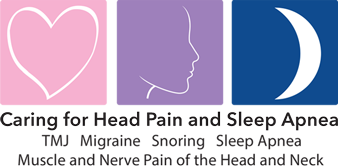
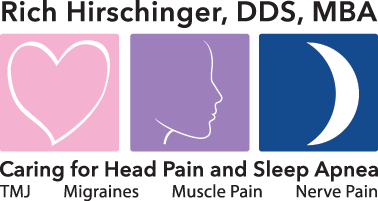
Diplomate American Board of Orofacial Pain
9615 Brighton Way, Suite 323
Beverly Hills, CA 90210
888.981.8981
Treatment for Post-traumatic Trigeminal Neuropathic Pain
PTNP, which stands for post-traumatic trigeminal neuropathic pain, is a painful condition usually caused by trauma. More specifically it is usually caused dental trauma. It can start after patients have had dental treatment such a routine dental cleaning, a filling, a crown, a root canal, an extraction, etc. In almost every case, there is nothing the doctor did wrong. It's just that the neurotransmitters that cause pain have been stimulated and are now constantly firing. The pain can occur from stimulation of the tongue and/or lip, and/or it can occur without any stimulation. Please read the Q-tip page to learn how to diagnose PTNP.
If you have been diagnosed with PTNP, the best initial treatment to try is a topical compound containing a 50/50 mix of 0.025% capsaicin in Orabase, which is placed inside a neurosensory stent. Capsaicin is the active ingredient in chili pepper, which means it is spicy. What we are trying to do is stimulate the neurotransmitters that cause pain to fire. The capsaicin compound needs to be applied inside the neurosensory stent about every 2 hours since the goal is to deplete the receptors from firing the neurotransmitters that are causing the pain. The stent is removed while eating and it is removed during sleep. Treatment time can take a few weeks to a few months, but the treatment only works if the patient is replacing the capsaicin about every two hours.
Here is a case where the patient had treatment on tooth #3, which is the upper right first molar. He had a crown and a root canal, which were both needed but he had a burning type of pain for several weeks after the treatment was completed that was always present on the palate side of the tooth. The Q-tip test showed that the pain was increased with a Q-tip and then reduced with topical, so impressions were taken for a neurosensory stent. What is critically important is that the impression capture plenty of gum tissue on the back side of the very last tooth. In this case, the patient had his third molars so the impression tray had to be extended to capture the back side (distal) of that tooth so that the lab could make the stent strong enough to wrap around the back side of the tooth. The neurosensory stents are made from UltraFlex, which is a flexible material, by a dental lab. I usually recommend patient's get two stents made so that they have a backup in case the primary stent breaks.
As you can see in the impression on the far left, the yellow arrow indicates sufficient tissue behind the third molar was captured in the impression. The middle photo shows the stent before it was placed in the patient's mouth. The photo on the right shows the stent inserted in the patient's mouth. You can see the capsaicin compound inside the stent, which is holding the medication against the tissue. If the patient tastes the capsaicin, they used too much since it is leaking out of the stent.
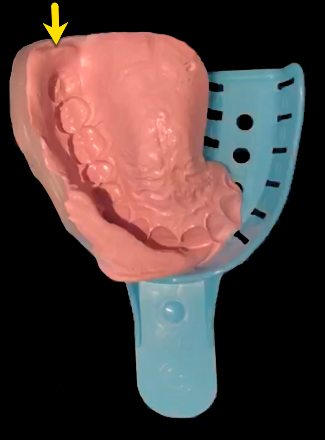
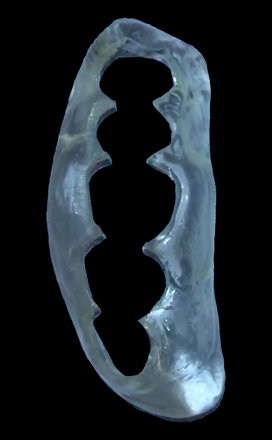
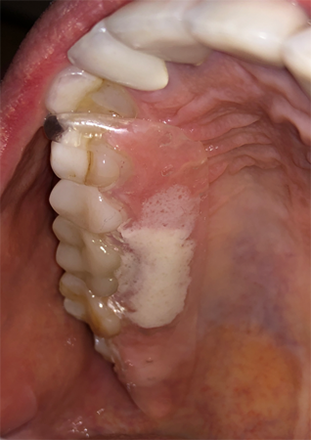
This is a video of one of Dr. Hirschinger's patients who had a history of pain in the upper left after sinus surgery who was treated with the topical capsaicin compound and a neurosensory stent.
This is a video of one of Dr. Hirschinger's patients who had a history of pain in the upper left after have a procedure done for a crown. The pain was a burning pain and a root canal specialist ruled out the tooth as a source of the pain and referred the patient to me. She was treated with the topical capsaicin compound and a neurosensory stent.
References:
International Classification of Orofacial Pain, 1st edition (ICOP) Search for 4.1.2.3 Post-traumatic trigeminal neuropathic pain
Topical application of capsaicin for treatment of oral neuropathic pain and trigeminal neuralgia
Peripheral Painful Traumatic Trigeminal Neuropathy: Clinical Features in 91 Cases and Proposal of Novel Diagnostic Criteria
Dr. Hirschinger is the inventor of the gentle jaw®, a passive stretching device for treatment of acute and chronic TMJ and muscle pain. gentle jaw is "yoga for the jaw®."






